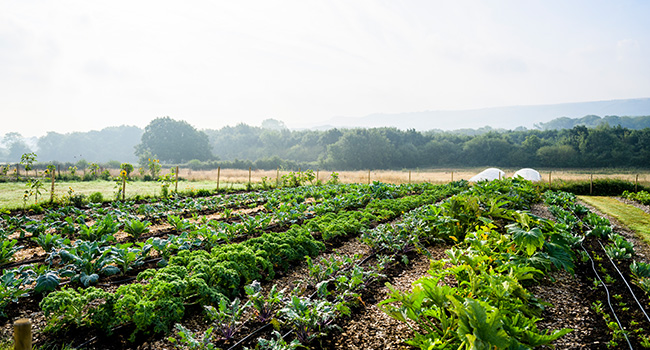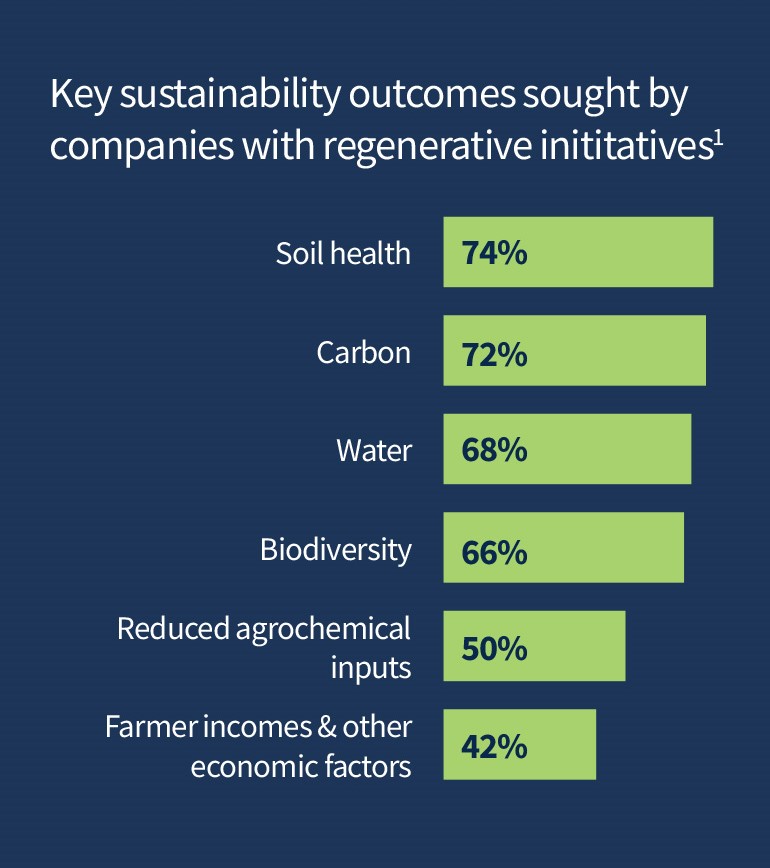
It is estimated that food systems account for approximately one third of total greenhouse gas emissions. Traditional or industrial agriculture practices are often carbon intensive and emphasize maximizing yield, using chemical fertilizers, depleting soil health, and disturbing ecosystems. Improved land stewardship, shifting away from these harmful practices toward more regenerative ones, is therefore one of our greatest tools to mitigate climate change. The good news is that such initiatives can be successful, and the technology already exists to put this into practice to address climate change.
Many companies have begun to make regenerative agriculture commitments, recognizing its power and potential for helping them achieve their climate action plans. However, the term lacks a universal definition. A recent report published by the FAIRR initiative (FAIRR)[1] evaluated 50 company commitments and found that while they share the goal to reduce the negative impacts of conventional production practices, there is little consistency in the approaches to delivering outcomes, for example, in the wide range of tools used, such as cover crops, crop rotation, or agroforestry. Evaluating the impact of these programs, with the help of context, farm-or landscape-level data, is vital. Discouragingly, FAIRR found that only 16% of the 50 companies discussed metrics and data.

Regenerative agriculture is a holistic approach designed for farmers to work in harmony with nature while maintaining and improving livelihoods. Farmer uptake, training, and incentives to help farmers participate in these programs are crucial. Companies could do more to prioritize the benefits that can be achieved for farmers producing their foodstuff. For example, they could improve farmers’ livelihoods by doing things like diversifying incomes through the planting of a variety of crops and reducing costs. The FAIRR Report displayed that only 24% of the 50 with commitments studied had a holistic strategy covering all six expected outcomes. A holistic approach, which recognizes the interactions between practices, is necessary to avoid negative externalities.
Though regenerative agricultural practices present attractive opportunities and could significantly help mitigate climate change, achieving positive outcomes can take years and require long-term commitments and financing. Companies must pledge to deploy each of the practices appropriate for the crop or ecosystem for all potential regenerative agriculture outcomes to be realized. In essence, this approach requires a business model transition away from unsustainable, yield-maximizing practices toward those that foster long-term resilience. It is also important to see how it relates to and supports a company’s overall climate strategy. Stakeholders need more accountability, increased monitoring and measuring, and clearly defined outcomes and approaches to achieve meaningful impacts. While it is not a simple undertaking nor a silver bullet to helping resolve the climate crisis, it is an achievable step in the right direction.
[1] The Four Labours of Regenerative Agriculture, FAIRR (September 2023)

The secret to making an impact is small.
It starts by subscribing to news and updates.
